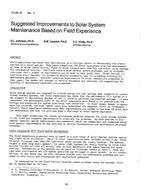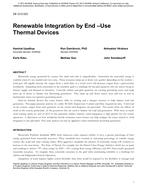Click here to purchase
The energy crisis in Egypt increase day by day due to the absence ofaction plans for energy savings. The annual increase in energy demand exceeds 12 percent, however, the government planned for increasing energy by 10% yearly. Egyptian power generation capacities reached 30000 MW two years ago, which was not enough for a population of 86 million, which now reached 90 million. On the other hand, the industrial energy consumption counted for about 30 percent and home use, consumption counted for about 40 percent of energy demand due to heavy use of air conditioners in summer and other appliances. There is a wide range in air conditioning systems starting with small split units and window fitted to medium size package to chilled water systems and for now the variable refrigerant flow (VRF). The variable refrigerant flow systems (VRF) are the commercial name for the Variable refrigerant volume (VRV), which was developed in 1982. The variable refrigerant flow system (VRF) principle works on the direct expansion basic concept which is the heat transferred from or to the zone directly by the flow of the refrigerant in cycles to the evaporators. The main purpose is to compare and simulate between the (VRF) system and the traditional system; which is the direct expansion system (DX). The mechanism, advantages and disadvantages, limitations, principle design, unit selections and cost analysis of each system are included. The comparison and simulation were done between the traditional air conditioning system, which already exists in an office building in the British University in Egypt, and proposed VRF system in terms of initial and long running costs. The simulation was done using HAP simulation software.
Citation: 4th Intl Conf: Efficient Bldg Design
Product Details
- Published:
- 2020
- Number of Pages:
- 8
- Units of Measure:
- Dual
- File Size:
- 1 file , 2 MB
- Product Code(s):
- D-ICEB20-35


